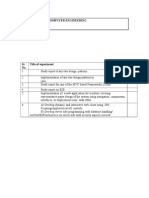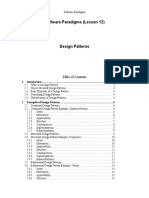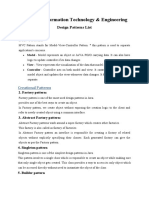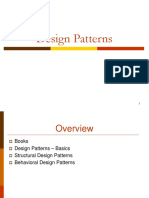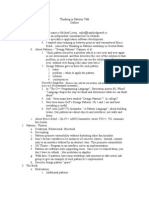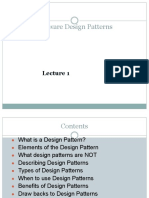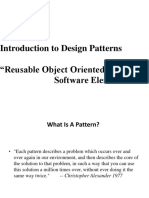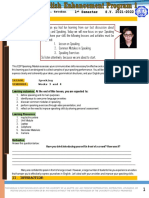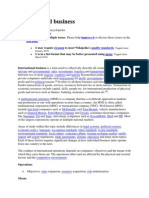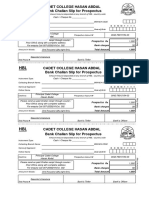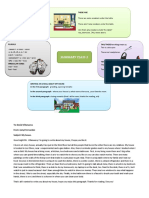0% found this document useful (0 votes)
145 views21 pagesDesign Patterns: CSC 335 Object-Oriented Programming and Design Fall 2006
This document provides an overview of design patterns and summarizes key information from two design patterns - Iterator and Strategy. It discusses how design patterns provide reusable solutions to common programming problems and how the Gang of Four book defined 23 classic design patterns. It then describes the Iterator pattern, which provides a way to access elements of an aggregate object sequentially, and the Strategy pattern, which allows an algorithm to be changed at runtime by implementing different strategies. Examples of using these patterns in Java are also provided.
Uploaded by
NAUSHUCopyright
© Attribution Non-Commercial (BY-NC)
We take content rights seriously. If you suspect this is your content, claim it here.
Available Formats
Download as PPT, PDF, TXT or read online on Scribd
0% found this document useful (0 votes)
145 views21 pagesDesign Patterns: CSC 335 Object-Oriented Programming and Design Fall 2006
This document provides an overview of design patterns and summarizes key information from two design patterns - Iterator and Strategy. It discusses how design patterns provide reusable solutions to common programming problems and how the Gang of Four book defined 23 classic design patterns. It then describes the Iterator pattern, which provides a way to access elements of an aggregate object sequentially, and the Strategy pattern, which allows an algorithm to be changed at runtime by implementing different strategies. Examples of using these patterns in Java are also provided.
Uploaded by
NAUSHUCopyright
© Attribution Non-Commercial (BY-NC)
We take content rights seriously. If you suspect this is your content, claim it here.
Available Formats
Download as PPT, PDF, TXT or read online on Scribd
/ 21




